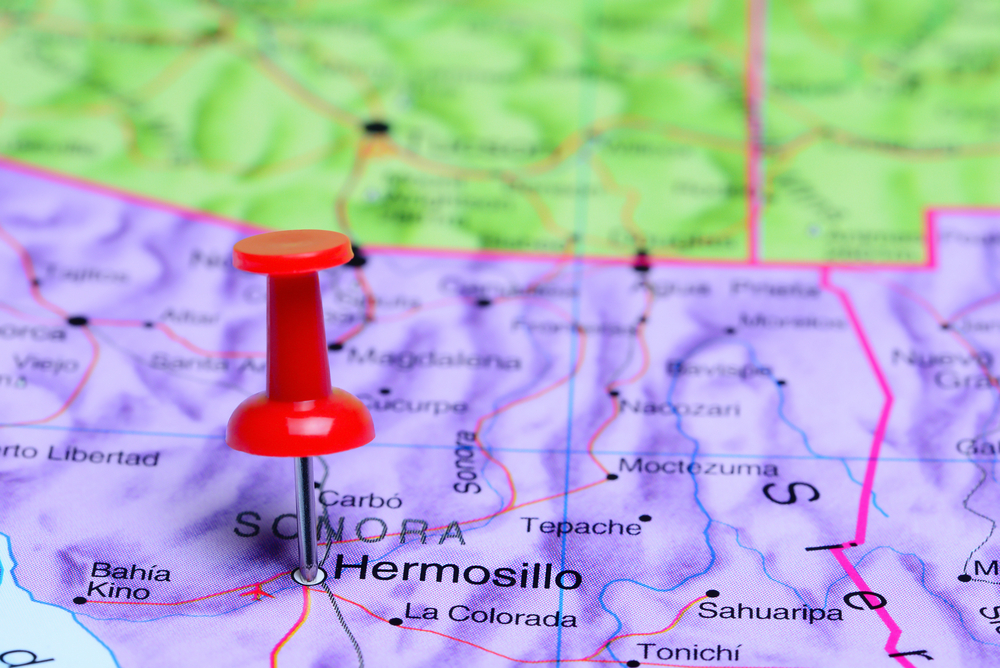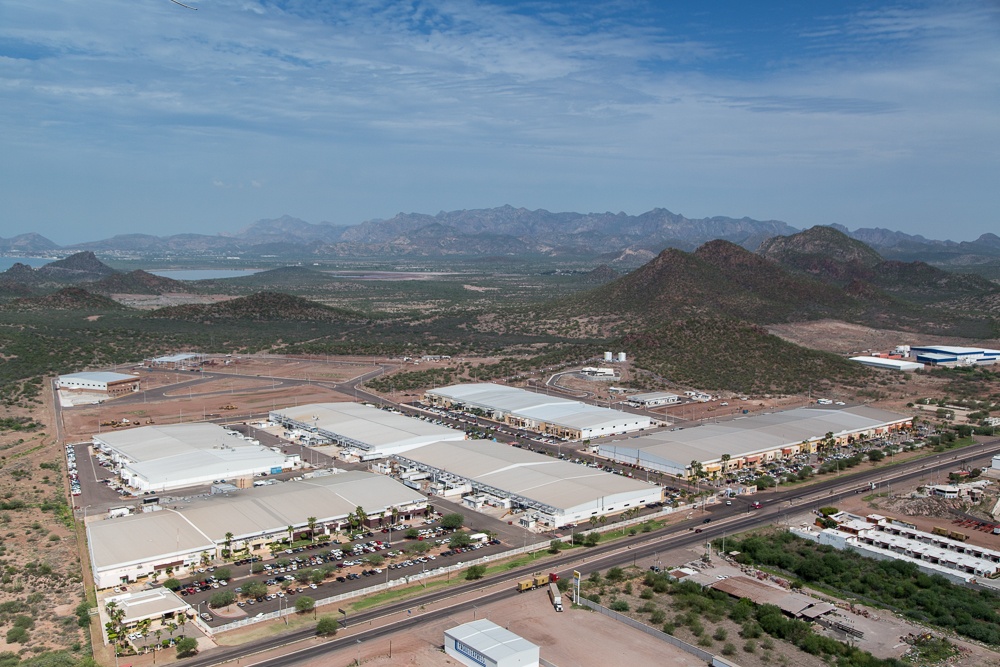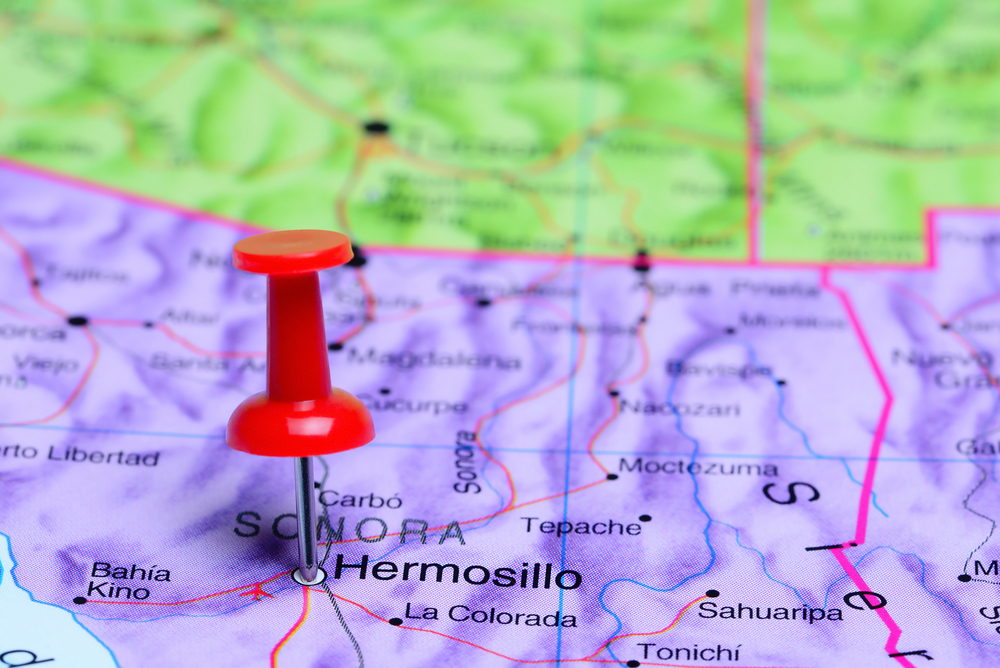When companies look at setting up manufacturing facilities in Mexico, Sonora should be high on there list of possible locales at which to initiate manufacturing operations.
Logical reasons for this abound: A plentiful, well-educated, Mexican manufacturing workforce with a high proportion of English speakers. Low rates of turnover are the rule. Wages between the Third and First Worlds. Excellent rail, sea and highway networks. Proximity to the US for sales (especially West Coast markets), and for executives interested in home-visits.
Yet, within Mexico itself is a stunning diversity of talent, geography, eco-systems, educational opportunites, cuisine, lifestyles and clusters of economic activities that include manufacturing (including high-tech), agriculture, animal husbandry and mining.
For many reasons, The Offshore Group and its Sonoran represenative, Maquilas Teta Kawi, have become synonymous with the State of Sonora.
The first reason is that The Offshore Group is the largest private sector employer in the State of Sonora. Secondly, there exists a coincidence of time and geography. The three founders of Offshore Group hail from Sonora and were intrigued, 25 years ago, at the prospects of a offering support services to U.S. manufacturers that would enable them to start up and to maintain Mexico manufacturing operatations. Their shelter program succeeded in matching a capable Mexican workforce with American companies seeking to assemble abroad.
That initial vision of the three founders, Luis Felipe Seldner, Roberto del Campo and Felix Tonella Luken, has been affirmed and reaffirmed many times. Mexico, on a national basis, has blossomed into a center for commerce and industry, not merely for sales and repatriation of products to the United States and Canada, but as am axis for activities for all of Central and South America. Sonora has played an integral role in this commerce.
Tucked away in the northwest of the country, Sonora is one of Mexico's least populated states (3.5 million people) and has far-flung populations occupying the second largest and-mass of any state (behind Chihuahua) in the Mexican Republic. It just happens to be one of the best places anyone could consider when siting a Mexico manufacturing facility in a nearshore location. Need confirmation? Look no farther than Ford Motor Co., which, in 1983, initiated manufacturing operations in Hermosillo, capital of Sonora, and began assembly two years later of the 1985 Tracer model under the Lincoln Mercury brand. That plant has grown steadily, even against the backdrop of economic ups-and-downs in the industry and U.S. economy, and now employs in excess of 3,000 workers. Not only has the plant grown and spawned a plethora of auto related industries and providers, but it has done so establishing and maintaining one of the most efficient (defect-free) plants in the industry. Several suppliers to the Ford manufacturing facility in Hermosillo are located in The Offshore Group's industrial parks in Guaymas and Empalme, one hour south of Hermosillo on the Sea of Cortez.
From Hermosillo, whose population is just under one million, it's a mere 3 hour drive or 40-minute flight to the US. From Guaymas, population 250,000, and Empalme, home of The Offshore Group's Sonoran operations, it's just an hour more by auto. The Sonora to Tucson (and Phoenix) corrridors are generally the best way to get goods to marketplace. Trips to the US are also the way that residents of Sonora, most with relatives in Arizona, spend three-day weekends and other holidays. Sonorans to a significant degree fuel the retail commerce of Southern Arizona.
A little further south, Ciudad Obregón, population about 450,000, and Navojoa, about half that, boast both large-scale industrial and agrobusiness ventures supplying both domestic and export markets. Just southeast of Navojoa is one of Mexico's colonial treasures, Alamos, population 10,000, a former capital of Sonora once dotted with silver mines.
The connection between Arizona and Sonora is, perhaps, tighter than any other pair of border states. Bus and private vehicle traffic between the states takes place around-the-clock. Sonora has five international airports -- more than any other state. Beaches of Sonora -- notably Puerto Peñasco, Kino Bay and San Carlos (in close proximity to the Offshore Group's industrial parks) -- attract Arizonans year-round. Many Arizonans have second homes in these cities and those who don't are served by hotel and condo-rental businesses. Exchange programs between schools in Sonora and Arizona, from primary level up through graduate school, are commonplace. The Arizona-Mexico Commission, and its counterpart, Comisión Sonora-Arizona, hold regular meetings to discuss bi-national isssues that include everything from wastewaster management to sports competition and cultural patrimony common to both states.
Sonora's border cities of Nogales, Agua Preita, Naco and San Luis Rio Colorado are havens not only for twin-plant assembly and tourism, but for Americans taking day-trips to see dentists and doctors, and purchase pharmaceuticals.
Geography plays a key role in the special relationship Sonora has with Arizona and the rest of the United States.
From Hermosillo, it is 1,400 miles to Mexico City, a 900-mile trip to Monterrey or Guadalajara and a laborious 10-hour drive to Tijuana. Compare that to a brief trip along a 4-lane highway to Tucson or Phoenix and it's easy to see why many Sonorans are repeat visitors to the U.S. while rarely, if ever, having visited major destinations in their own country.
Sonora has attracted a diverse Mexican manufacuring workforce from all over the country and, what was once an economy that depended entirely on copper, cattle, fishing, citrus and wheat is now as diverse as that of Arizona.
The Offshore Group and Maquilas Teta Kawi, it should be noted, have not limited their operations to Sonora, even though its industrial parks in Sonora house manufacturing clients that employ more than 11,000 workers. In addition to operations in Hermosillo, Empalme and Guaymas, the company -- aware of the needs of other industrial clusters -- has operations in Saltillo, Coahuila, which south of the Texas border and in proximity to Mexico's industrial hub, Monterrey.
The following online sites offer the interested a glimpse into Sonora: www.impulsor.gob.mx, run by a governmental entity, Operadora de Proyectos Estratégicos del Estado de Sonora, provides the visitor with an inventory of ongoing projects being carried out in conjunction with government. The official state website, www.sonora.gob.mx, offers an overview of the state's make-up and ongoing events. The gamut of tourism attractions are presented on www.sonoraturismo.gob.mx , while www.economiasonora.gob.mx is the site of the State's Economic Development Ministry. The state's foreign investment promotion arm, presents a bilingual site that complements the state's missions abroad to attract investment. It can be found at www.sonora.org.mx. The best single entry on contemporary Sonora may be found at http://en.wikipedia.org/wiki/Sonora.
Manufacturing in Mexico is a means by which companies can increase their competitive edge and expand their markets during challenging economic times. Doing so in a place with both quality of life and business conditions conducive to achieving success is essential. Sonora in general, and Guaymas and Empalme specifically, provides the right climate for manufacturers in a multiplicity of industries.
Subscribe
Sign up and stay informed with tips, updates, and best practices for manufacturing in Mexico.





